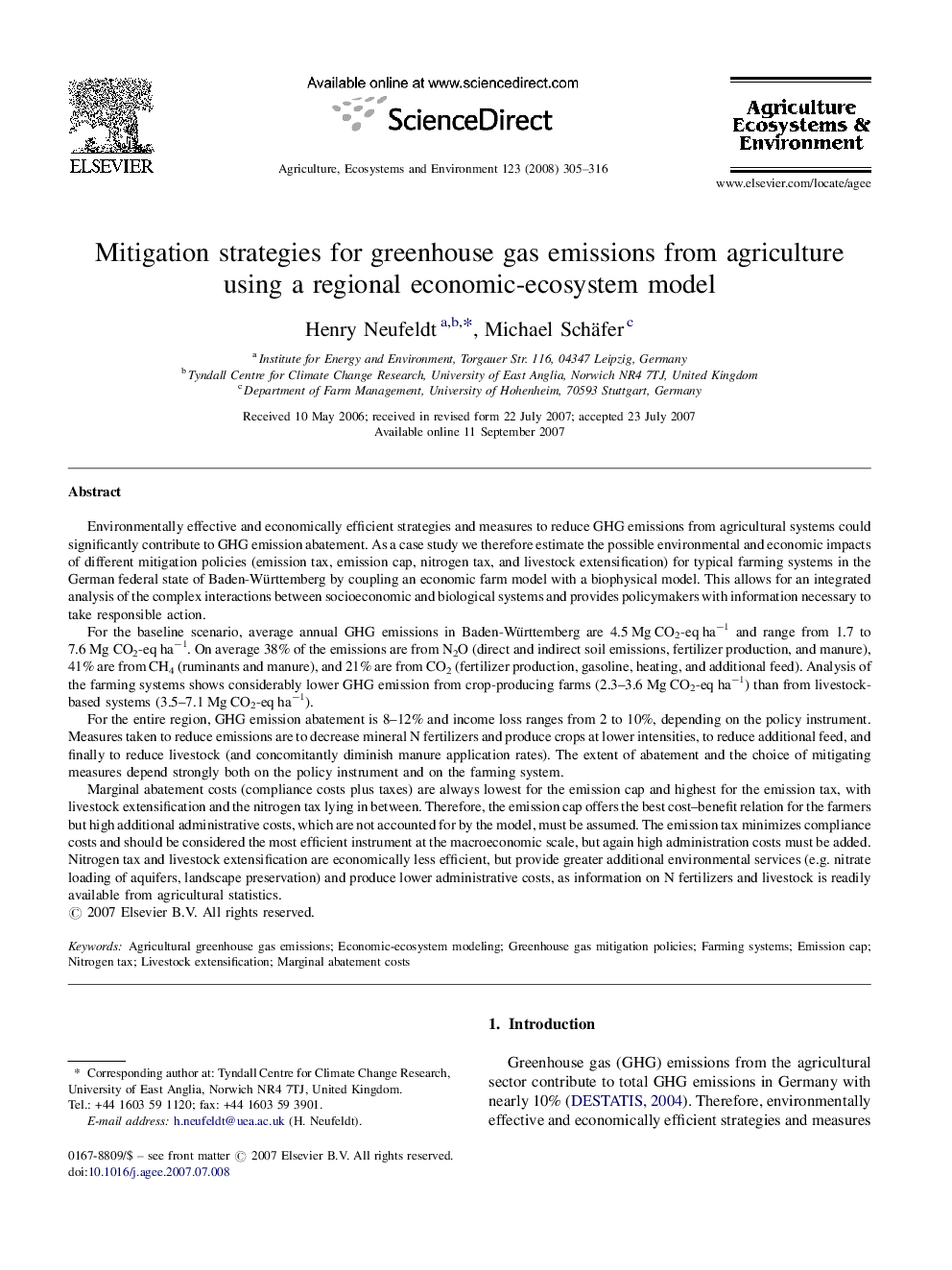| کد مقاله | کد نشریه | سال انتشار | مقاله انگلیسی | نسخه تمام متن |
|---|---|---|---|---|
| 2415496 | 1103963 | 2008 | 12 صفحه PDF | دانلود رایگان |

Environmentally effective and economically efficient strategies and measures to reduce GHG emissions from agricultural systems could significantly contribute to GHG emission abatement. As a case study we therefore estimate the possible environmental and economic impacts of different mitigation policies (emission tax, emission cap, nitrogen tax, and livestock extensification) for typical farming systems in the German federal state of Baden-Württemberg by coupling an economic farm model with a biophysical model. This allows for an integrated analysis of the complex interactions between socioeconomic and biological systems and provides policymakers with information necessary to take responsible action.For the baseline scenario, average annual GHG emissions in Baden-Württemberg are 4.5 Mg CO2-eq ha−1 and range from 1.7 to 7.6 Mg CO2-eq ha−1. On average 38% of the emissions are from N2O (direct and indirect soil emissions, fertilizer production, and manure), 41% are from CH4 (ruminants and manure), and 21% are from CO2 (fertilizer production, gasoline, heating, and additional feed). Analysis of the farming systems shows considerably lower GHG emission from crop-producing farms (2.3–3.6 Mg CO2-eq ha−1) than from livestock-based systems (3.5–7.1 Mg CO2-eq ha−1).For the entire region, GHG emission abatement is 8–12% and income loss ranges from 2 to 10%, depending on the policy instrument. Measures taken to reduce emissions are to decrease mineral N fertilizers and produce crops at lower intensities, to reduce additional feed, and finally to reduce livestock (and concomitantly diminish manure application rates). The extent of abatement and the choice of mitigating measures depend strongly both on the policy instrument and on the farming system.Marginal abatement costs (compliance costs plus taxes) are always lowest for the emission cap and highest for the emission tax, with livestock extensification and the nitrogen tax lying in between. Therefore, the emission cap offers the best cost–benefit relation for the farmers but high additional administrative costs, which are not accounted for by the model, must be assumed. The emission tax minimizes compliance costs and should be considered the most efficient instrument at the macroeconomic scale, but again high administration costs must be added. Nitrogen tax and livestock extensification are economically less efficient, but provide greater additional environmental services (e.g. nitrate loading of aquifers, landscape preservation) and produce lower administrative costs, as information on N fertilizers and livestock is readily available from agricultural statistics.
Journal: Agriculture, Ecosystems & Environment - Volume 123, Issue 4, February 2008, Pages 305–316